Video: 15 key steps to achieve best-practice drying-off protocol
Clinical mastitis costs the dairy industry a huge amount and it’s critical from an animal welfare and production point of view that it is prevented where possible and detected and treated accordingly when necessary.
Preventing disease is as important as ever with the increasing pressure of the risk of antibiotic resistance. And on a dairy farm, having good protocols in place for transition management and drying off is key.
See also: Six things that affect lifetime milk production
This step-by-step guide for drying-off protocol was produced by AHDB Dairy and goes through the best practice:
1. Identify cows to be dried off – for example, with stockmarker spray on her leg.
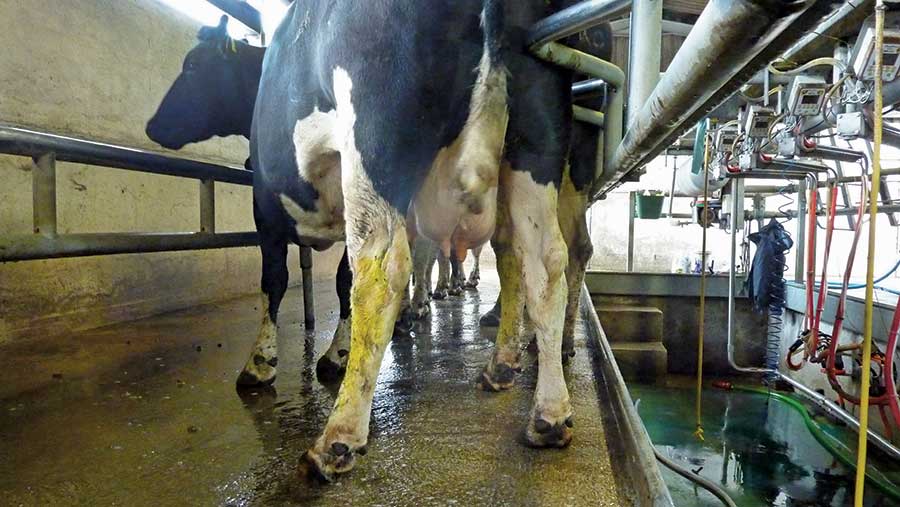
2. Wash arms and hands clean. Wear a fresh pair of disposable gloves and keep clean and dry. Replace gloves frequently, preferably between cows.
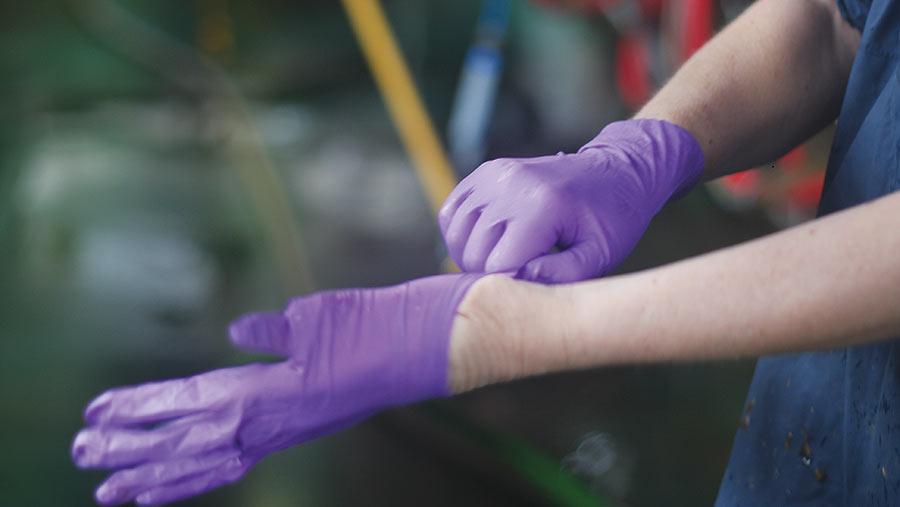
3. Pre-dip each teat using a fast-acting disinfectant. Leave on for 30sec.
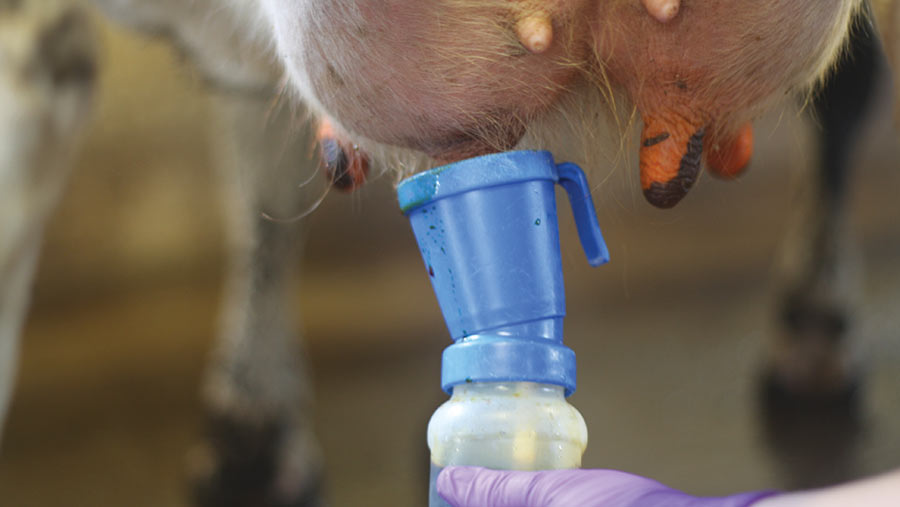
4. Wipe teats to be dried off with an individual paper towel per teat, paying particular attention to the teat end. Start with the teats furthest away, moving to the closest one.
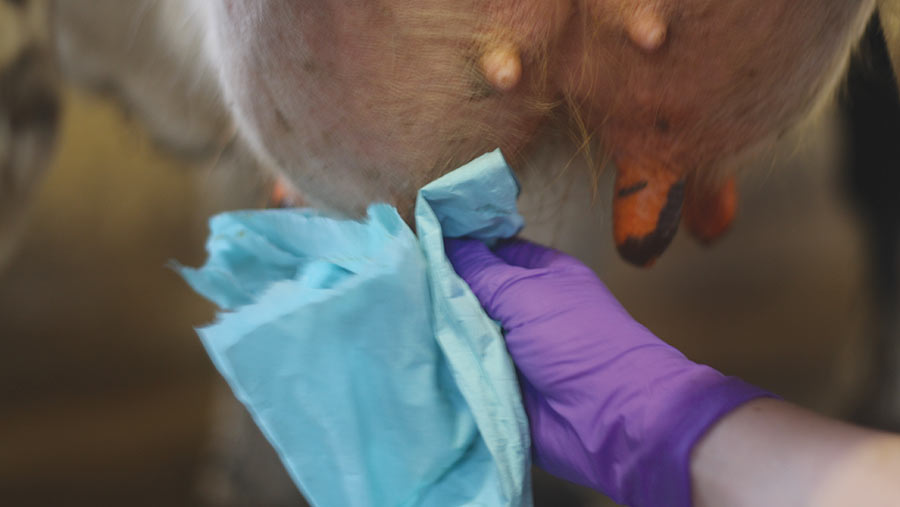
5. Keeping hold of the teat in one hand, wipe the teat and teat end with cotton wool soaked in surgical spirit. Focus on getting the teat end spotless. If there is dirt on the cotton wool after you have cleaned the teat end, repeat with a fresh piece of cotton wool. Do not let go of the teat.
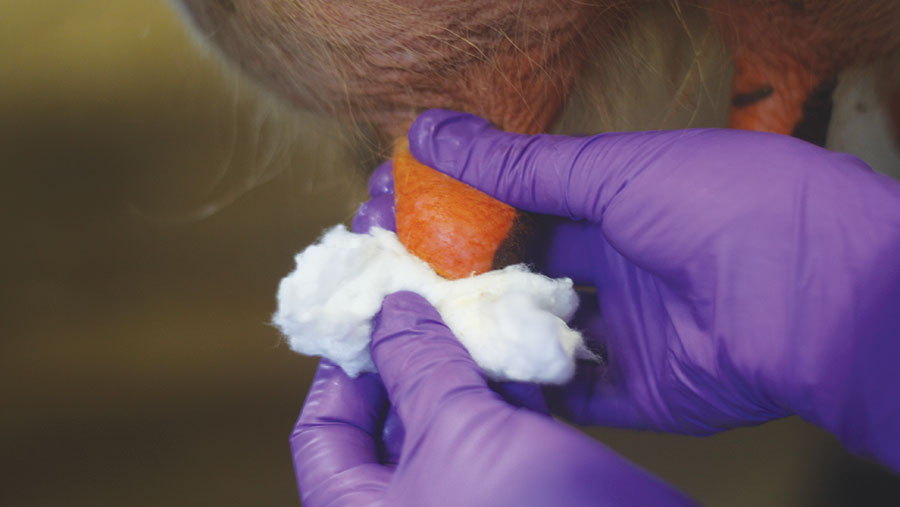
6. Ideally an assistant should help prepare the tubes and hand them to you. If using internal teat sealant only, proceed to step 9.

ANTIBIOTIC
7. Using a partial insertion technique, infuse the whole antibiotics tube into the teat. Only insert the tube end and maintain a gentle pressure to stop the product leaking around the nozzle. Do not let go of the teat.
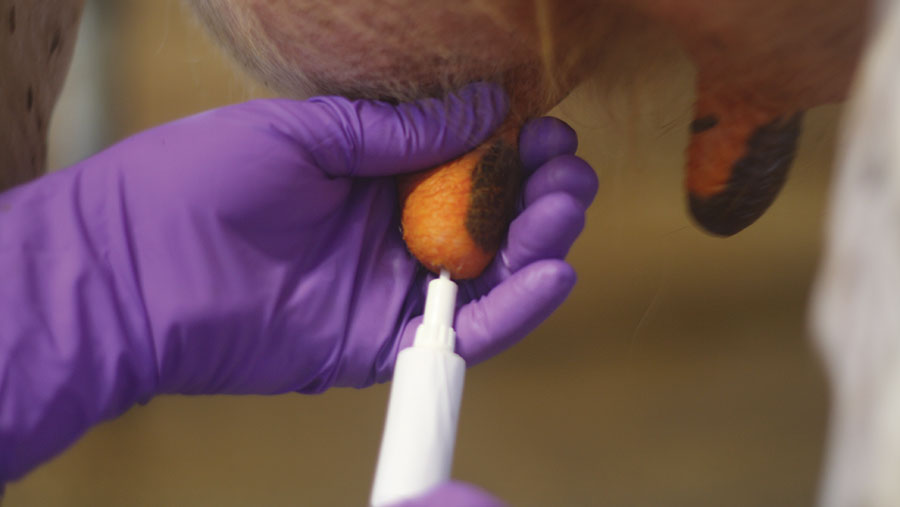
8. Without letting go, massage the antibiotic up the teat canal. Slide your non-tube hand down the teat after infusing and hold the teat end without touching the teat orifice to allow you to massage the content up towards the udder with your tubing hand.
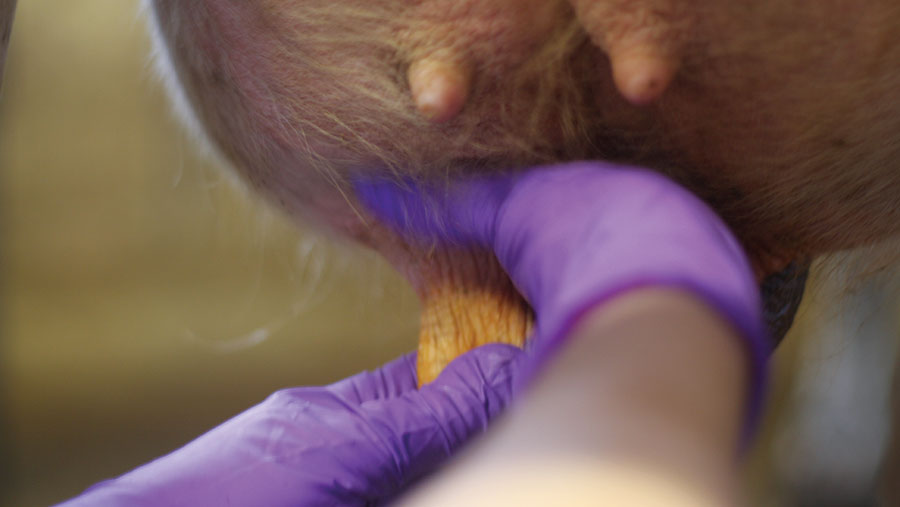
TEAT SEALANT
9. When using teat sealant, using the crook of your first finger and thumb to pinch the base of the teat where it joins the udder. The teat will bend towards you. Hold the pinch until the product has been infused into the teat.
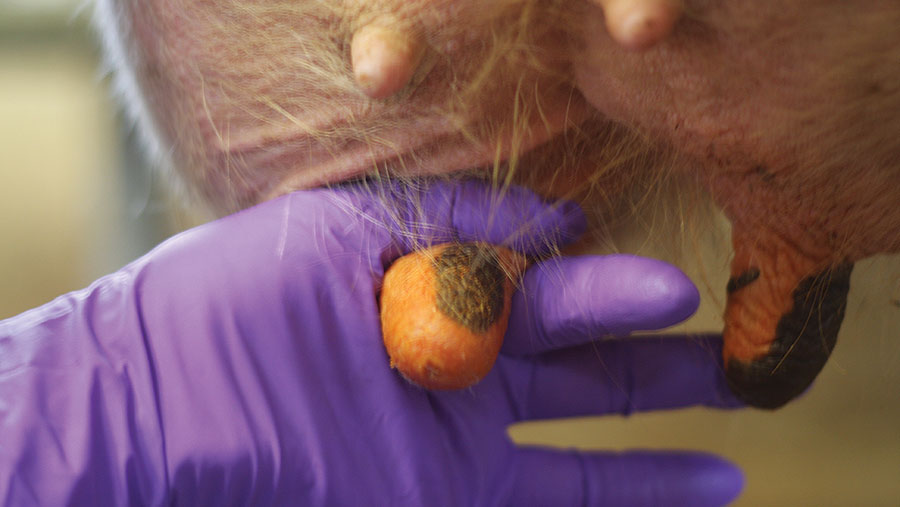
10. Gently infuse the teat sealant until pressure builds up in the teat. When infusing teat sealant, cleanliness of the teat end is absolutely critical. Remove the teat sealant tube before letting go of the pinch to avoid the sealant being forced up into the udder. Do not massage after infusion.
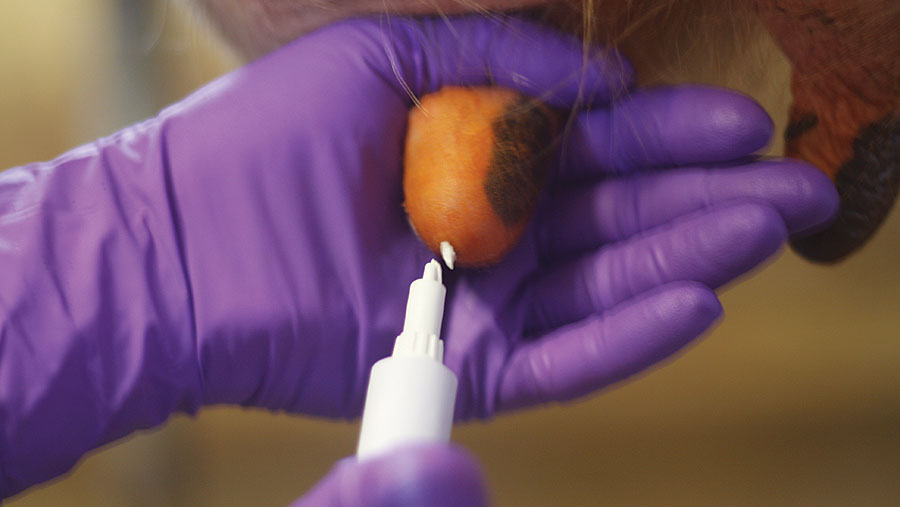
11. After each teat has the appropriate product infused, it should have post-milking teat dip or spray applied.
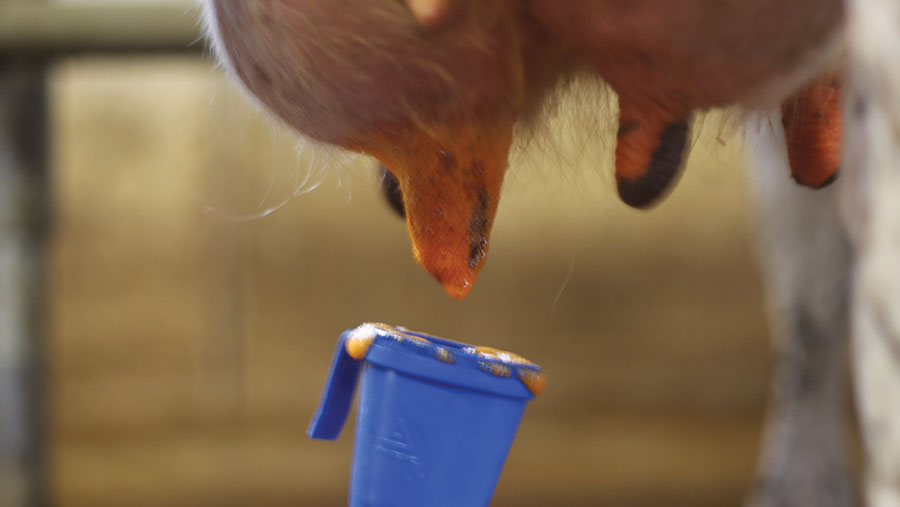
12. Check that the cow is permanently identified as treated. This reduces the chances of milking a dry cow with antibiotics and causing antibiotics failure.
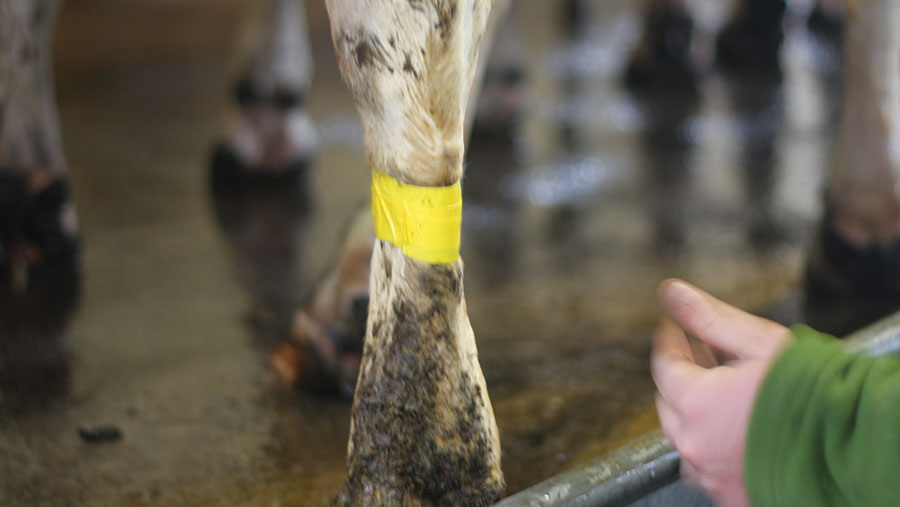
13. Allow the cow to stand in a clean yard for at least 30min before moving to dry cow accommodation or pasture.

14. In pasture-based systems, avoid recently dried-off cows walking long distances immediately after drying off.
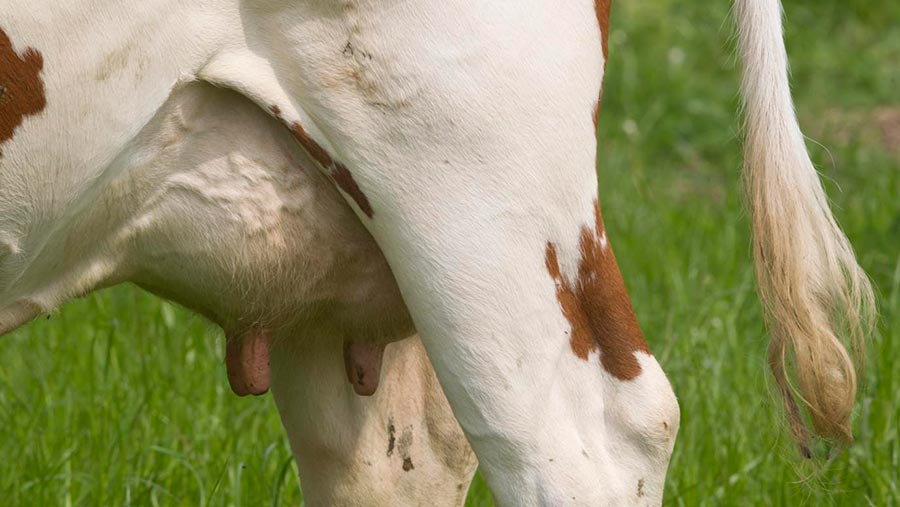
15. Check udders daily for signs of mastitis.
See the above guide in video format below, with herd manager Richard Wells and vet Dr James Breen, a specialist in cattle health:
This guide has been produced as part of AHDB Dairy’s Mastitis Control Plan.
It was put together by AHDB Dairy, with help from Dr Andrew Biggs, Dr Andrew J Bradley, Dr James Breen, Prof Martin Green and Vale Veterinary Group. Pictures courtesy of Dr Biggs.
